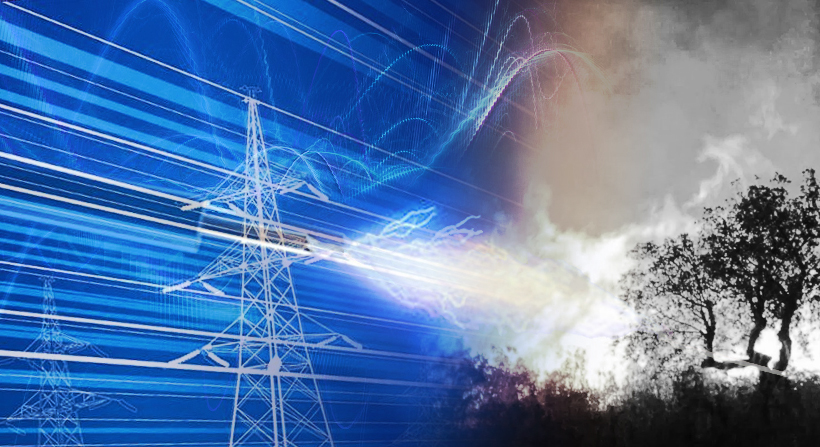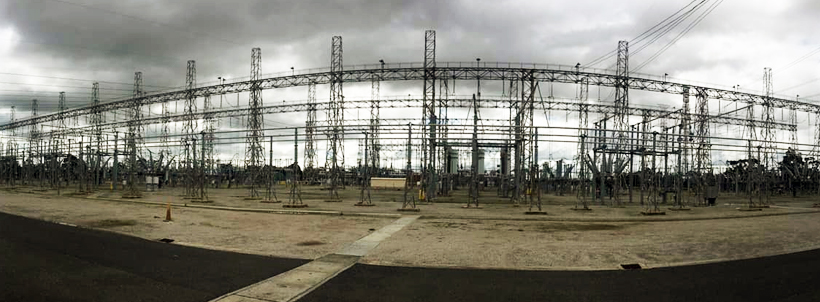
Real-Time Control of Electricity as it Flows Prevents Electrical Fire Conditions
The Reality of Fire Risk in Transmission and Distribution Networks
The flow of power in the grid is continuous much like water in a riverbed, only instead of erosion being the steady force of change and floods being the worst case scenario, it is infrastructure degradation and out of control fires. As suburbs push further out from the cities and inhabit more of the area that is presently occupied solely by grid infrastructure, the liability of this fire risk has exponentially increased as recently exhibited in the PG&E fires in Northern California.
One critical point of view that must be considered when assessing fire risk in T&D infrastructure is the variance that exists throughout the grid. The wires that connect our grid together are not uniform in thickness and have a standard deviation throughout them based on material, manufacturing process, installation, etc. Contacts, relays, insulators, connectors, and all of the infrastructure throughout the grid also have a permissible level of variance in material and manufacturing which have a real world effect on the flow of power through them.
And while most of the installation processes and protocols are standardized, there is an inherent variance in the quality of the installation for each of these components, all put in place by different people using various tools and techniques, from different organizations, in different environments and at different times.

The culmination of these variances play a significant role in fire risk. If everything is perfect once the grid is energized, power flow is ideal, however variance in the grid infrastructure has a direct influence on the power flow that results in more rapidly degrading infrastructure, wasted energy and moving closer to potential fire conditions.
Adding more complexity to this issue is the transition in the climate resulting in sporadic intense weather events and long term shifts in water tables creating an uncertain environment around the frequency and intersection of extreme heat waves and significant droughts, the ideal conditions for fire events within transmission and distribution level grid infrastructure, particularly when coupled with large increase in demand that is required to keep customers cool in the heat.
The expansive distance covered by T&D infrastructure makes it extraordinarily difficult if not impossible to visually inspect it all, so it makes one wonder how fires are presently predicted and prevented?
The scary truth is that they really aren’t. Sensors are distributed throughout the grid and in the infrastructure deliver limited information about the power and some component functionality, however there is not presently any way to identify when fire conditions are present.
This vulnerability can be mitigated by proper design. Each component used in the grid is rated for a particular amount of current, however this rating is based on the requirement that the utility will not exceed it at any time during operation. Presently, utilities do not have that level of precision control over power flow in such an expansive territory. So in reality each component is incorporated based on what the designer thinks is going to happen when the grid is energized. What actually occurs when power is flowing must then be gleaned from the limited information provided by distributed sensors.
It is impractical to place sensors everywhere throughout the grid, so T&D operators are left without real knowledge or precision control of their vast network of resources, some of which can cause fires under certain conditions. Success in this system fundamentally relies on good quality infrastructure, proper design and construction and ultimately hope that nothing will go wrong.
3DFS Technology, Direct Measurement of Electricity and New Power Flow Visibility
One of the driving innovations behind 3DFS Technology is direct measurement of electricity. This is only possible with enough computing power to be able to accurately and continuously acquire and process data many thousands of times per cycle. Data processing at this level also opens the capability of Real-Time Electricity Analytics, where the precise status of all electrical parameters, at any point in a power flow cycle is always accurate and available.
This Real-Time information has never been available previously, opening up new visibility into electrical power flow. This includes revealing the instant effect, as well as the subsequent cycle to cycle effects of harmonics, reactive power and phase imbalance in power networks. Precise, simultaneous understanding of the ebbs and flows of these parameters in Real-Time reveal an astonishing amount of information about what is presently occurring within the power network and is a critical tool in predicting, identifying and reacting to fire conditions within a grid or power network.
All electrical events can be modeled based on their complete Real-Time electrical signature including all voltage, harmonics and reactive power effects resulting in guaranteed precision in identification detectable from miles away. Real-Time Electricity analytics instantly identifies the presence of sparking or arc flash in the grid through these distinct model-based signatures revealed in the power flow. This creates instant awareness and notification of events including tree limbs falling on power lines, or transformers and reclosers failing.
Instant identification of sparking and fire related events is only half a solution; prevention of fire conditions in the first place is the full solution. Software-Defined Electricity is leveraging precision direct measurement to provide the unique ability of Real-Time electrical correction, or the technological capability to clean and balance electricity as it flows.
Embedding Real-Time intelligence for synchronization of flowing power prevents extreme electrical events from occurring in the first place by maintaining the harmonics, reactive power and phase balance within optimal levels at all times, never allowing them to get out of control and start a fire.
This functionality is only possible when electricity is directly measured and controlled in Real-Time with Software-Defined Electricity. Contact us to learn more.


